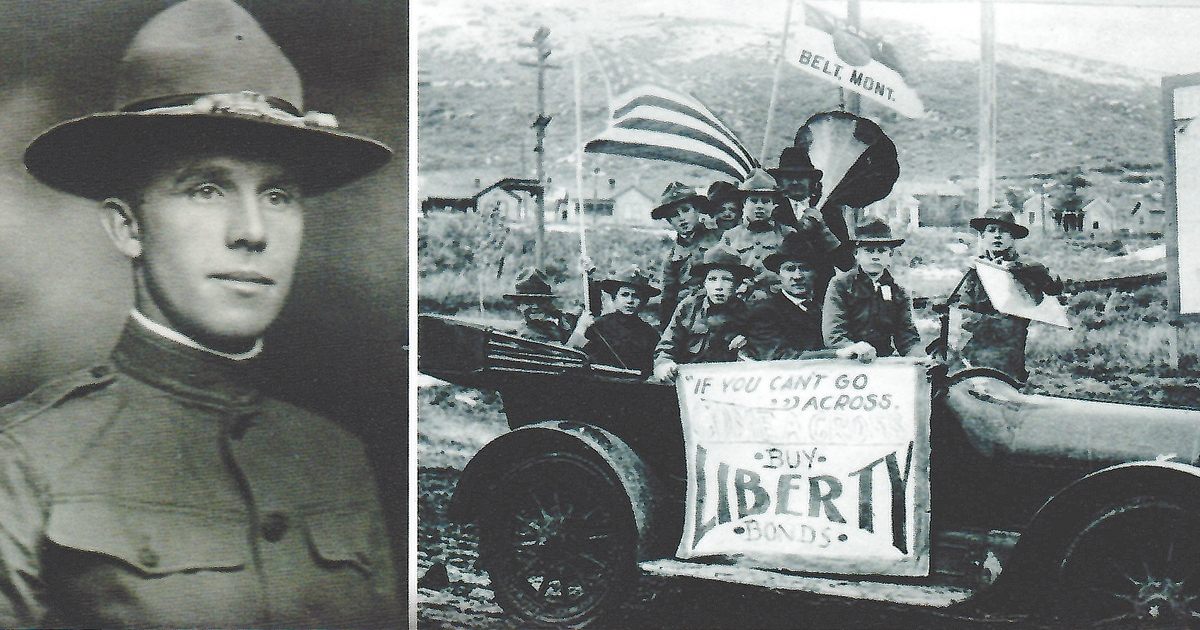(Ken Robison, The History Press; 2018).
By AARON PARRETT
Ken Robison happens to be at the peak of his powers in his second career. After honorably serving a full career in the Navy as a Captain in Naval Intelligence, Robison returned to Montana and began writing history, and perhaps without meaning to, embarked on a second career.
His output has been prodigious: at last count, he’s authored four books of his own and co-authored three more, including the celebrated Beyond Schoolmarms and Madams: Montana Women’s Stories.
His latest book fittingly arrived on my desk the week before Armistice Day. In World War I Montana: The Treasure State Prepares, Robison skillfully chronicles the investment of men and women that Montana made in the so-called “War to end all wars.”
“Montana men served in the Great War in a greater percentage than any other state,” Robison writes, and he reminds 21st century readers that Montana’s natural resources fueled the war effort.
It was often said, with only a shade of hyperbole, that practically every bullet fired on the battlefields of Europe had been encased in Butte copper, for example. And among the most famous battle cries of the allies was the old cowboy and cattleman’s slogan, “Powder River, Let ’Er Buck.”
Montana figured in the political history of the war as well: every Montana student knows that Jeannette Rankin was the first woman elected to Congress, but less celebrated is the fact that within a week of entering that august body, she cast her most famous vote—a vote against the declaration of war in 1917.
That vote, and her anguished comment, “I want to stand by my country, but I cannot vote for war,” crystalized her long career as a pacifist. As Robison points out, she was joined by only 49 other “nay” votes in the House.
That mood was reflected back in her home state, where “communities throughout Montana organized public mass meetings and parades in support of President Wilson.” Every part of Montana, of course, except Butte, where miners—almost all of them immigrants from all over Europe—opposed a war that was likely to kill the men and women of their old countries. In his chapter, “Mobilizing State and Nation,” Robison documents the labor strife that arose in Butte as a consequence of the war effort, including the arrival of federal troops charged with compelling striking miners to keep the mines open. That strife culminated in the assassination of IWW organizer Frank Little, whom Robison quotes, “if the mines are taken under federal control, we will make it so dammed hot for the government that it will not be able to send any troops to France.”
Robison deftly stitches together the innumerable individual ways in which the war touched Montana lives, careful to maintain the historian’s objective perspective, but conscientious as well to deplore “the hyper-patriotism” that led to xenophobia and the burning of German books in 1918 in Lewistown.
The author contrasts the reactionary zeal of Tom Stout with the wiser statesmanship of Sheriff Matlock, for example. Stout clamored that “those who would not be destroyed must purge their hearts of every thought not in consonance with the spirit of our institutions, not in obedience to the stern purposes of our common country,” whereas Sheriff S.W. Matlock of Yellowstone County issued a “Sheriff’s Proclamation to foreign-born residents” assuring them that they had no “need [to] fear any invasion of his personal or property rights so long as he goes peaceably about his business,” though such reassurances often gave way to mob fears.
This book will make an excellent resource for any student of Montana history, and a memorable gift for anyone from the Treasure State who has served.
Robison has a gift for connecting the vast panorama of our national history to its origins in local events lived by people we know and recognize. World War I Montana tells the story of our state’s intimate involvement in one of the most devastating conflicts of the 20th century in a way that keeps you turning the page, astounded at the depth of detail and the endless ways in which what happens in one modest, mountainous corner of the world can affect history over 7000 miles away.
One component of a new Ken Robison book that I always look forward to is the wealth of photographs he manages to discover and share, and this volume is no exception. I’m proud to see, in fact, a photograph on the front cover of my own grandfather, Alf Pettersen, a Norwegian immigrant-turned-Butte miner who proudly served in France. MSN









